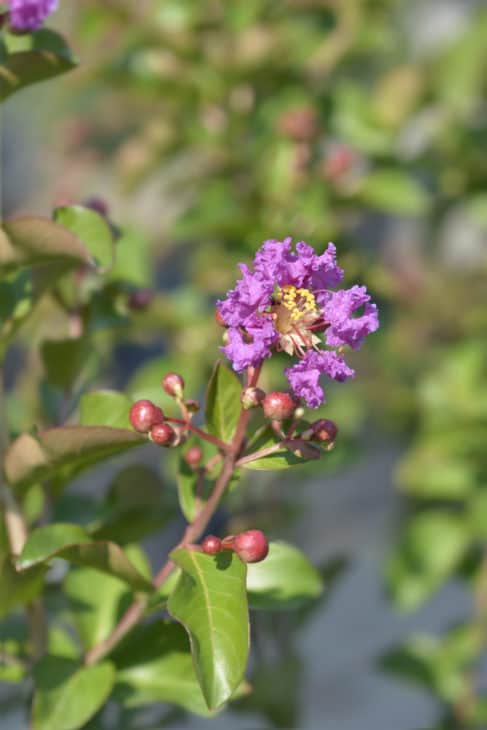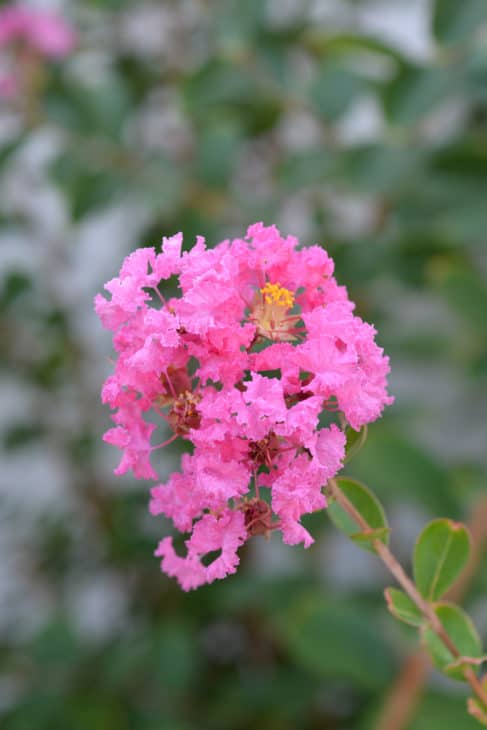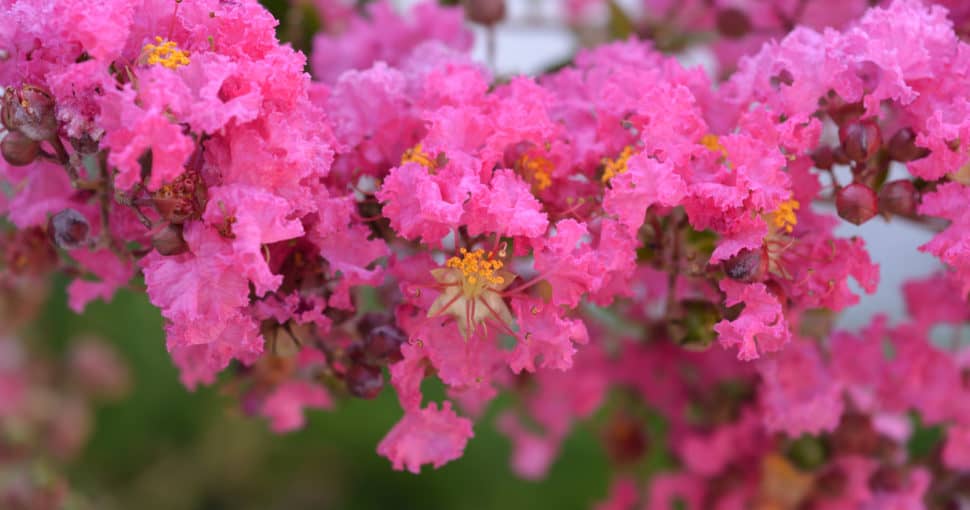Crêpe Myrtle trees are well-known in the United States, especially in the south. These trees have been increasing in number as many people are choosing to plant these trees in their gardens over others. But what are the pros and cons of Crêpe Myrtle trees?
Crêpe Myrtle trees have many pros and cons; these include Crêpe Myrtle trees are easy to propagate, they are fast-growing, and they are less likely to damage buildings. However, these trees are prone to certain pests and diseases, and they aren’t native to the United States, to name a few.
The 5 Pros Of Crêpe Myrtle Trees
Crepe Myrtle trees are some of the most beautiful trees you can find in gardens across America, especially in the south. These trees are fast becoming popular as they offer many benefits if you have one or two in your garden. Let’s go through the pros of having a Crepe Myrtle in your garden!
1. Crepe Myrtle Trees Have A Stunning Appearance
Crepe Myrtle trees are some of the most popular trees across the United States, but mainly in southern gardens, solely due to their stunning appearance. These trees have lovely bright green leaves and produce gorgeous pink flowers in the summer.
These beautiful trees are named after the petals of the flowers they produce, as they have crinkles in them, which most people believe look like crepe paper. Most of the Crepe Myrtle trees also offer lovely fall colors, making these trees excellent year-round performers for your garden.

2. Crepe Myrtle Trees Are Easy To Propagate
Another great thing about Crepe Myrtle trees is that they are super easy to propagate, so you can always ensure you have one in your garden, and they make for good gifts to family and friends. Propagating these trees is also inexpensive and will not take you long to do.
One easy and popular method of propagating Crepe Myrtle trees is through sprout cuttings, where you take a tip cutting from the tree in the spring and plant the cutting in some sandy soil until they root. There are other ways you can propagate this tree, but people report better success through this method.
3. Crepe Myrtle Trees Are Fast Growing
Crepe Myrtle trees are relatively fast-growing trees when compared to others. The larger Crepe Myrtle trees, in particular, tend to grow quite fast, which is a great benefit for people who are planting trees in their garden to improve the appearance of their gardens, which then can help increase the value of their house too.
Crepe Myrtle trees can grow to be quite tall in a short amount of time, meaning they can offer some great shade in your garden for you to place a table under so you can enjoy the beautiful appearance of this tree much sooner.
4. Crepe Myrtle Trees Are Less Likely To Damage Buildings
Crepe Myrtle trees do not have invasive roots, which means they are less likely to damage building foundations and sidewalks if planted close to these structures.
While you should try and avoid planting all types of trees close to building foundations, sidewalks, and septic tanks and their systems, the roots of the Crepe Myrtle trees are less likely to cause problems with these structures than other trees.
The roots of the Crepe Myrtle trees tend to be long, and they grow shallow, but they are weak and can break easily. So, if they encounter an opposing force, like a building’s foundation, they will usually break or try to find a different direction to grow in.
5. There Is A Wide Variety Of Crepe Myrtle Trees
Crepe Myrtle trees come in a wide variety. Each of these varieties offers you different sizes, shapes, and flower colors, but the trees with the pink flowers seem to be the most popular varieties.
Some varieties of this tree include the Queen’s Crepe Myrtle, the Japanese Crepe Myrtle, and the Indica Crepe Myrtle. Each of these varieties is a beautiful tree and will be a great addition to your garden.
The 4 Cons Of Crepe Myrtle Trees
Even though the Crepe Myrtle trees have many great things to offer you, such as their stunning beauty and their wide variety, these trees do also have a few cons you need to know before you go and buy one for your garden. Let’s go through these cons, so you can determine if a Crepe Myrtle tree is still for you. Otherwise, have a look at these Crepe Myrtle alternatives.
1. Crepe Myrtle Trees Are Prone To Certain Pests
Crepe Myrtle trees are prone to certain pests that the other trees in your garden may have no issue with. The main pests that will attack your Crepe Myrtle tree are Aphids and bark scale. These pests will suck the sap out of your tree and cause the tree to become dehydrated.
This could kill the tree if you do not treat it with insecticidal soap as soon as possible. Not only can these trees be susceptible to some pests that could damage the tree, but these trees can also attract pests like spiders to your garden and home.

2. Crepe Myrtle Trees Are Prone To Diseases
Crepe Myrtle trees are also prone to certain diseases, and they can catch them quite easily. The main disease you need to watch for with your Crepe Myrtle trees are powdery mildew, root rot, black spot, sooty mold, Cercospora leaf spot, and tip blight.
Unfortunately, these diseases are common with Crepe Myrtle trees, and you will most likely have to deal with at least one of them, if not more, in your tree’s lifetime.
3. Crepe Myrtle Is Not Winter Tolerant
Most Crepe Myrtle trees are not winter tolerant, and they will die if the temperature drops too low. A few Crepe Myrtle varieties are more cold-hardy than others, but all varieties will perish in a cold freeze.
These trees generally prefer hot temperatures and thrive in the USDA Hardiness Zones 7-10. So, if you want to see if a Crepe Myrtle tree will do well in your climate, you need to research the USDA Zone you live in.
4. The Crepe Myrtle Is Not Native To The United States
Crepe Myrtle trees are not native to the United States, which does mean they are technically an invasive species. These trees are native to China and other Asian countries. These trees made their way to the United States in 1786 and are now a staple tree in the southern landscape.
As Crepe Myrtle trees can reseed themselves, they are considered invasive by many conservationists, which can cause problems for people who grow them.







